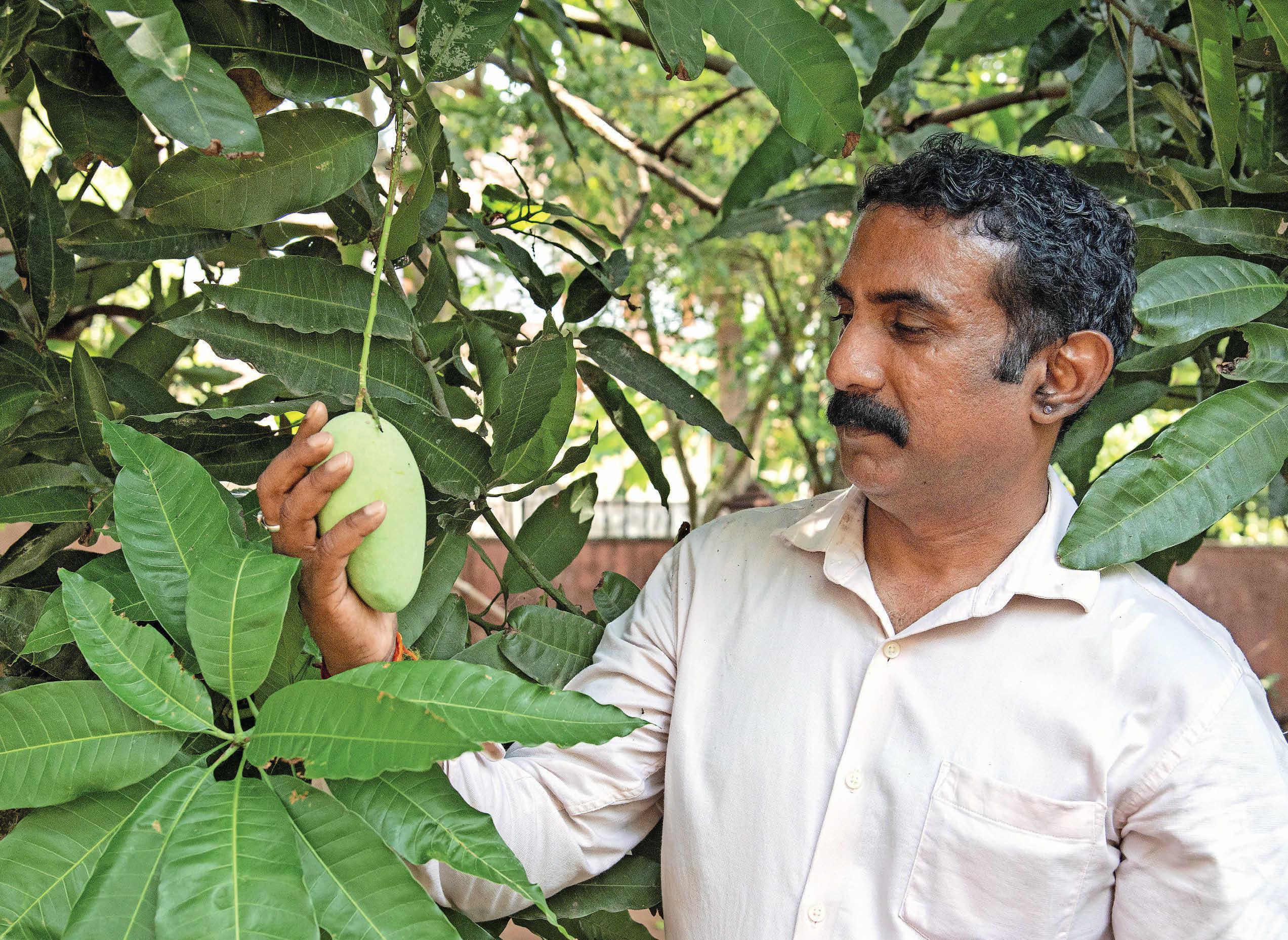
The summer of 2020 was not a kind one. It was a scorching April afternoon when Sakhil Thaiyyil and friends reached Ottapalam in Palakkad, Kerala. As the road made a sharp turn, he noticed a gated house partly under the shade of a mango tree. The group stopped. On the other side of the gate, the woman of the house grew suspicious of the strangers staring at her property. When Thaiyyil asked her how good were the mangoes, she said, “Useless.”
The lady’s reaction did not surprise him, having had several such encounters. He did what he has always done—picked up a mango, half-eaten by a bird, from the ground and took a bite of its unbitten side. And, he was in sweet heaven. “Were you talking about this same tree, chechi (sister)?” he asked the woman. The fruit was fleshy with little fibre. The woman sheepishly replied that she was sleepy and was caught off guard by the group of strangers who wanted to know about a mango tree. When asked if the tree had a name, she was baffled. Who names trees in their compound? Thaiyyil spotted the name of her child scribbled on the steps leading to the house’s main door. “Shall we call it ‘Kunjoos’, then?” he asked. The family agreed.
Apart from ‘Kunjoos’, there is ‘Anaswara’, ‘Arya’, ‘Kairali’, ‘Thrissurkaaran’ and more. Most mangoes ‘found’ by Thaiyyil’s group are named with some reference to their discovery. “Mostly, it is nicknames of children. Obviously, you cannot give sweet mangoes adult names like Babu, Sabu,” he said, laughing.
この記事は THE WEEK India の May 26, 2024 版に掲載されています。
7 日間の Magzter GOLD 無料トライアルを開始して、何千もの厳選されたプレミアム ストーリー、8,500 以上の雑誌や新聞にアクセスしてください。
すでに購読者です ? サインイン
この記事は THE WEEK India の May 26, 2024 版に掲載されています。
7 日間の Magzter GOLD 無料トライアルを開始して、何千もの厳選されたプレミアム ストーリー、8,500 以上の雑誌や新聞にアクセスしてください。
すでに購読者です? サインイン

Stop ruling; start governing
In every election the voters elect a government.

HEALING THE EARTH
Land Restoration for a Drought-Resilient Future

Speak of the nawab
For Heeramandi's male lead, Taha Shah, the road to success was paved with flops

Northern delights
Four Kashmiri fashion labels that want to put the troubled region on the international style map

WOOING THE WAVES
India is developing strategic ports overseas and is exploring new oceanic trade routes to pursue its growing geopolitical objectives

TIPU, SULTAN!
In his first major election after the death of Mulayam Singh Yadav, Akhilesh humbles the BJP and proves he is his own man

A SLEEPER HIT
Naidu’s stunning victory raises questions about the vote-catching power of welfare schemes

SWEEPING LOSS
AAP’s disappointing performance has put a question mark on its relevance in the INDIA bloc

INDEPENDENTS' DAY
The Lok Sabha results in Baramulla and Ladakh reflect a churning among voters

Voters have changed, and we have benefited
In March 2022, Vice President Venkaiah Naidu asked a quirky question to actor-MP Suresh Gopi, who had come to the Rajya Sabha with a distinctive look.